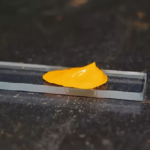What is an air ionizer and how it works?
Air ionizer is a device that is designed to clean the air in the room by electrical charging of air molecules. Instead of using a fan or air purification filter, the air ionizer uses ions to remove microscopic particles. The air ionizer makes air more healthy for people who suffer from asthma, allergies, weakened immunity and respiratory diseases, as it destroys allergens that circulate in the air.
Ion -based air cleaners rely on the chemical properties of particles. Ion is just a particle that can be charged on a plus or minus. The ionizer creates negative ions using electricity. The opposites are attracted, therefore, negative ions flood the room and look for positively charged particles, such as dust, bacteria, pollen, smoke and other allergens.
Negative ions and positively charged particles are binded to each other. This makes the mud particles be too heavy to swim around in the air, so they fall to the floor and other surfaces in the room, for example, furniture, TV screens, shelves and can be cleaned from the surface with a simple rag.
Most particles near the Earth are positively charged. Natural phenomena such as lightning or waterfalls generate negative ions and ozone. This creates a well -known aroma of freshness that a person feels during a thunderstorm or near water rapids on the river. Ozone is a natural gas associated with oxygen. Isolation in buildings prevents atmospheric air circulation, and ionizers compensate for this.
Air pollution as a whole causes a lot of public attention, but air pollution in the room is not often noticed. Dust and mold are collected inside the air ducts and the higher the humidity in the room, the more bacteria flourish. Ionizers solve this problem partially. Ozone, which is created from the generation of negative ions fights with pollution, breaking it into smaller components, which complicates the possibility of microbes to grow and deodorizes them.
Ionizers are more economical and consume less energy than air purifiers. Nothing requires constant replacement, since there are no filters themselves that are polluted. Although most ionizers do not have a motorized fan, ionization nevertheless creates a weak breeze that helps to spread ions around the room. Some ionizers are equipped with screens that catch dust particles when they fly up to the floor.





